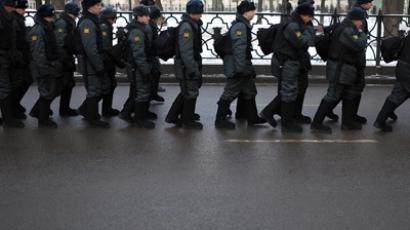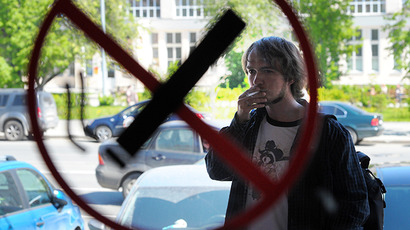Private enterprise could help revive Soviet-era ‘sobering stations’

An initiative to bring back notorious ‘sobering stations’ has received some support from the Health Ministry. However, activists insist that only participation of socially-responsible businessmen can make such enterprises humane and effective.
The history of the ‘vytrezvitel’, or sobering station, dates back to 1902 when the first such establishment opened in the central Russian industrial city of Tula. Something of a hybrid hostel, doctor’s surgery and police station, the vytrezvitel’s objective was to save local residents who had drunk themselves senseless from freezing to death in harsh Russian climates, as well as other hazards like drowning or crime.
The first vytrezvitel was funded from the municipal budget, and proved so effective at saving lives that in just a few years similar institutions soon appeared in every major city in the country. The creator of the idea – medic Fyodor Arkhangelsky – received several awards for his work.
The idea was picked up by the Soviet authorities, and many sobering stations appeared across the country in the 1930s. Like everything else in the planned Soviet economy, the projects were state-funded. At first they were part of the Health Ministry, but in 1940 the network was passed under the control of Interior Ministry – police involvement was too large anyway as drunks often turned aggressive.
The system existed till the collapse of the Soviet Union and after it, but in modern Russia the number of sobering stations began to decrease rapidly. The main reason was problems with funding, but also the position of lawyers who pointed out that police were in fact detaining drunks without sufficient grounds (appearing in public places under the influence is not an offence in Russia).
The Vytrezvitel network ceased to exist in late 2011 and all of its functions are now performed by hospitals and ambulances.
However, the two years of such practice revealed numerous drawbacks (the main one being the overloading of health institutions in larger cities). Now some activists say they want to bring vytrezvitels back. The head of the federal Sober Russia program, Sultan Khamzayev, said in an interview with Izvestia daily that his colleagues had drafted a plan according to which the new sobering stations should be a joint venture of private medical institutions and municipal authorities.
City administrations provide space and private businesses participate with equipment, transport and personnel. The sobering services are provided for free, but medics are allowed to use half of the room for their own commercial purposes. There is also the possibility of financial support from the state.
The head of the Independent Narcological Guild, Ruslan Isayev, said that the idea could save many lives, especially in winter, but noted that it must be executed very carefully to ensure the patients humane treatment. Isayev noted that the cooperation with private business was probably the best way to provide quality services and sufficient investment.
Deputy Health Minister Tatyana Klimenko appreciated the idea as “very promising,” but noted that the particular mechanisms of its implementation still had to be discussed.














